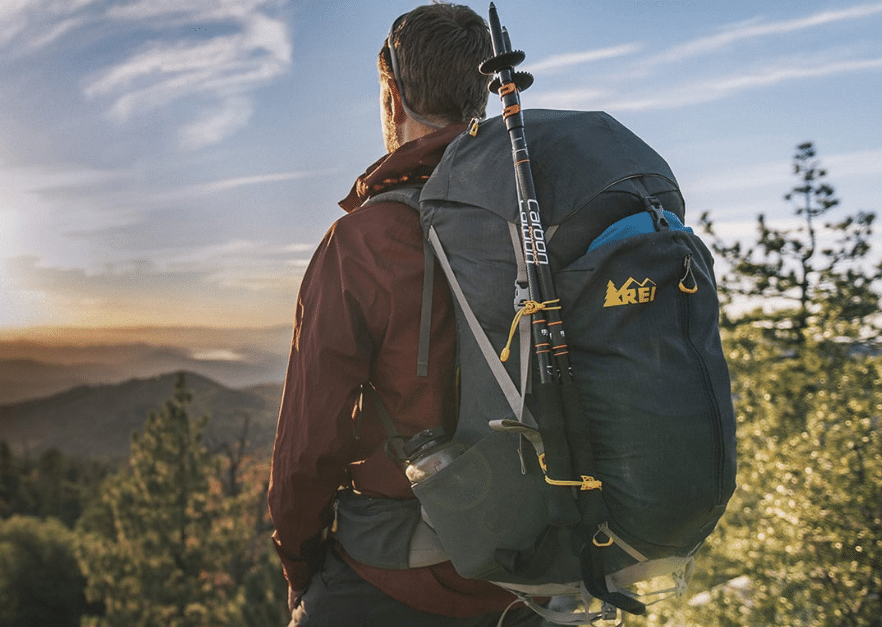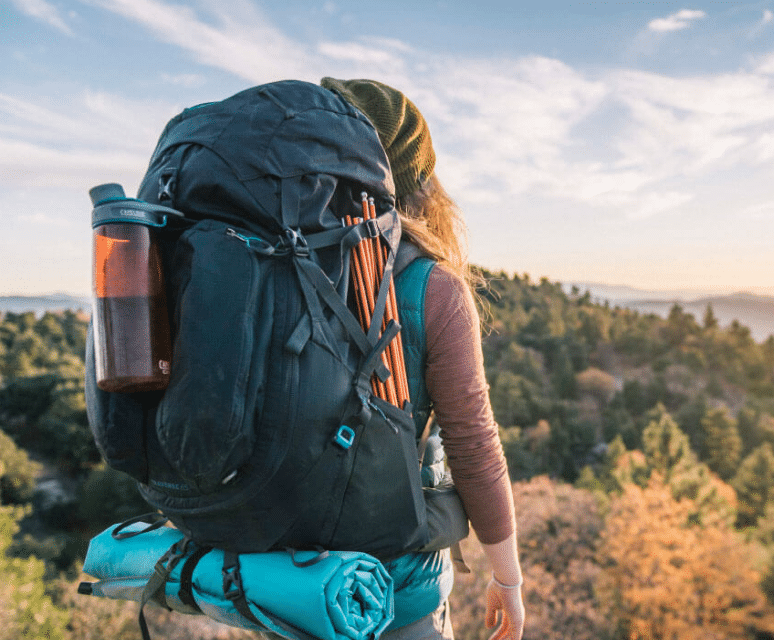Types Of Backpacking
Backpacking is a form of low-cost, independent travel. Once considered a marginal activity undertaken by society’s drop-outs, it has gradually entered the tourism mainstream. Backpacking is an adventure that blends hiking with backcountry camping. It lets you broaden your horizons beyond the car campground to enjoy a richer, more immersive outdoor experience.
A key distinction from day hiking is the size of your pack—your backpack (and you) must carry all of life’s essentials on your back. And you must choose those essentials with care. While backpacker tourism is generally a form of youth travel, primarily undertaken by young people during gap years, it is also undertaken by older people during a career break or retirement.

Backpackers tend to be from Europe, the English-speaking world, Asia, or Israel. Backpacking can seem intimidating, especially if you didn’t grow up with it. Heading out into the unknown with nothing more than you can carry is a pretty scary prospect, but it needn’t be. By following simple guidelines, making proper preparations, and reassuring yourself that your planning will help you encounter whatever unexpected adversity the trail throws at you, you can get your first trip under your belt.
Backpacking Gear
These items should be part of your backpacking checklist:
- Hiking boots or shoes
- Backpack
- Tent
- Sleeping bag and sleeping pad
- Stove and fuel
- Kitchen supplies
- Plenty of food
- Water bottles and water-treatment supplies
- Weather-appropriate clothing
- Emergency and hygiene supplies
- Small repair kit
- The Ten Essentials
Sleeping Bags
- Best All-Around Value: REI Co-op Magma 15° (men’s and women’s version)
- Highest Quality: Western Mountaineering Alpinlite
- Best Ultralight Quilt: Enlightened Equipment Revelation 10°
- Best Women’s Bag: Feathered Friends Egret UL 20°
- More info: Best Backpacking Sleeping Bags & Quilts
Sleeping Pads
- The Best Ultralight Summer Pad: Therm-a-Rest UberLite
- Best Ultralight 3-Season Pad: Therm-a-Rest NeoAir XLite
- Best 4-Season/Cold Sleeper Pad: Therm-a-Rest NeoAir XTherm
- Most Quiet/Convenient: NEMO Tensor Insulated
- Best Foam Pad: NEMO Switchback
- Best Budget Air Pad: Klymit Static V2
- More Info: Best Backpacking Sleeping Pads
Pillows
- Best Ultralight Pillow: Zpacks Medium-Plus Dry Bag Pillow
- Most Comfortable Pillow: Therm-a-Rest Compressible Pillow
Backpacking Food
Nuts and Seeds
Nuts and seeds are portable, convenient options for backpackers. They also make excellent snacks for those who are traveling. Nuts and seeds are high in vitamins, minerals, healthy fats, fiber and protein, which backpackers need to stay fueled.
Dried Fruit
Unlike fresh fruits, which are highly perishable, dried fruits are heat-stable and have long shelf lives. The drying process removes excess water from the fruit and inhibits the growth of bacteria that cause food to spoil. Dried fruit retains many of the nutrients found in fresh fruit and provides a healthy source of vitamins, minerals, antioxidants, fiber and carbs.

Calorie Intake
Backpackers burn a lot of calories on the trail. On average, hikers usually burn between 3000-4000 calories per day, but thru-hikers crushing 20-30 mile days can easily burn 5000-6000 calories. It’s crucial to pack enough nutrients to give your body the energy it needs. This important calculation will also depend on your size, weight, age, and activity level.
Weight
Bringing too much food is one of the most common beginner backpacking mistakes. And that’s understandable, who wants to risk going hungry in the woods? But carrying a bunch of unnecessary weight can quickly dampen spirits on backpacking trips, so a little experience and pre-trip calorie calculation will go a long way.
Ultralight Backpacking
No official definition of “ultralight” exists. It’s more a frame of mind than an arbitrary pack weight. It’s about deciding you can get by with less. You can find your own sweet spot on a continuum of, say, 12 to 28 pounds. Relying less on gear means relying more on your own judgment of how to stay safe, healthy, and comfortable on the trail.
Read Also: Should College Athletes Be Paid For Their Likeness
The lighter your pack, the faster you’ll hike and the more ground you’ll cover. Learn which ultra-light gear essentials to bring on light and fast days to keep your load light without leaving behind essential food, clothing or first-aid items.
If you’re ready to lighten your load on the trail, here are a few tips for starters:
- Weigh your gear: Find a kitchen and/or luggage scale and weigh your current gear. Make a note of your current “base weight”: everything on your back except food, water and fuel (known as consumables).
- Replace older gear with lighter gear: As you replace old gear and choose new gear, pay close attention to each item’s weight. You’ll be aiming for a total base weight of about 10 pounds. (Once you add consumables that weight may double.)
- Make gradual changes: Because gear can be more expensive the lighter it gets, a smart approach may be to lessen your load over time. Replace one “big ticket” item at a time with a lighter-weight (and potentially more costly) model.
Read Also:Turkish Get Up Benefits For Athletes
What Does It Mean To Go Backpacking?
Backpacking is a form of low-cost, independent travel. It includes the use of public transport; inexpensive lodging such as youth hostels; often a longer duration of the trip when compared with conventional vacations; and typically an interest in meeting locals as well as seeing sights.
Wat er
You don’t need to carry all the water you’ll need for the entire day. Do your research and find out where streams and lakes are found along your route so you can filter and refill along the way. Some tips:
- “Camel up” before you leave camp each morning by drinking a good amount of water. Do the same each time you reach a water source (after you filter, of course). This way you may find you can get by with carrying less water as you hike.
- Carry only one liter (2.2 pounds) if that seems feasible (unless you’re in a desert, then you’ll need more) between water sources.
How Much Weight Should You Carry Backpacking?
When determining your pack weight, follow these very general guidelines: A loaded backpacking pack should not weigh more than about 20 percent of your body weight. (If you weigh 150 pounds, your pack should not exceed 30 pounds for backpacking.)
What Should You Not Bring Backpacking?
- Jewelry and Valuables.
- Heavy Zoom Lenses For Your Camera.
- Extra Toiletries.
- Too Many Cotton Clothes.
- More Than One Pair of Jeans.
- Those Nice Shoes.
- Hiking Boots.
- More Than One Jacket.
What Do You Need To Go Backpacking?
- Hiking boots or shoes.
- Backpack.
- Tent.
- Sleeping bag and sleeping pad.
- Stove and fuel.
- Kitchen supplies.
- Plenty of food.
- Water bottles and water-treatment supplies.
When preparing for your backpacking adventure, consider using an online pic editor to resize and optimize your photos for sharing your journey with friends and family while minimizing data usage and storage space on your devices.